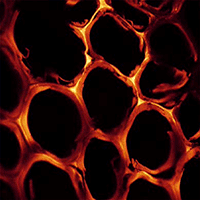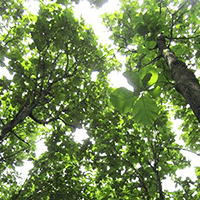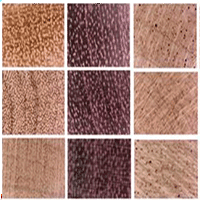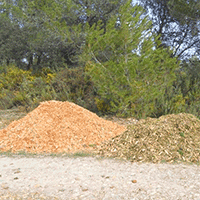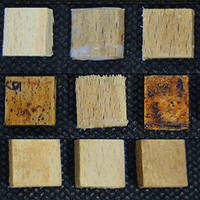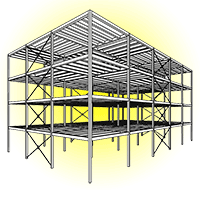
Comparison of timber-house technologies and initiatives supporting use of timber in Slovenia and in Sweden - the state of the art
Manja Kitek Kuzman (1) , Dick Sandberg (2)
iForest - Biogeosciences and Forestry, Volume 10, Issue 6, Pages 930-938 (2017)
doi: https://doi.org/10.3832/ifor2397-010
Published: Dec 07, 2017 - Copyright © 2017 SISEF
Research Articles
Collection/Special Issue: COST action FP1407
Understanding wood modification through an integrated scientific and environmental impact approach
Guest Editors: Giacomo Goli, Andreja Kutnar, Dennis Jones, Dick Sandberg
Abstract
Historically, Slovenia and Sweden have equivalent uses of timber in construction and a long tradition of timber engineering and architecture. Nevertheless, in spite of these similarities, the development path to reach a modern and industrialized use of timber in construction which allows a diversity of architectural expression and design possibilities has differed considerably between these two countries, after the function-based building regulations that were introduced in Europe nearly three decades ago. This paper gives an overview of some characteristic modern timber buildings in Slovenia and Sweden, and the different construction techniques that are used in these two countries. Successful initiatives supporting the use of timber in construction are also presented. The opportunities for the further development of sustainable timber constructions in Slovenia and Sweden lie in new production methods, high prefabrication, and energy-efficient and climate-effective architecture, besides partnership and increased responsibilities for planning, improved and systematic feedback of experience and team cooperation, as well as knowing users identity, values and life style.
Keywords
Architecture, Timber Construction, Technologies, Promotion Initiatives
Authors’ Info
Authors’ address
University of Ljubljana, Biotechnical Faculty, Department of Wood Science and Technology (Slovenia)
Luleå University of Technology, Wood Science and Engineering (Sweden)
Corresponding author
Paper Info
Citation
Kitek Kuzman M, Sandberg D (2017). Comparison of timber-house technologies and initiatives supporting use of timber in Slovenia and in Sweden - the state of the art. iForest 10: 930-938. - doi: 10.3832/ifor2397-010
Academic Editor
Giacomo Goli
Paper history
Received: Feb 08, 2017
Accepted: Sep 08, 2017
First online: Dec 07, 2017
Publication Date: Dec 31, 2017
Publication Time: 3.00 months
Copyright Information
© SISEF - The Italian Society of Silviculture and Forest Ecology 2017
Open Access
This article is distributed under the terms of the Creative Commons Attribution-Non Commercial 4.0 International (https://creativecommons.org/licenses/by-nc/4.0/), which permits unrestricted use, distribution, and reproduction in any medium, provided you give appropriate credit to the original author(s) and the source, provide a link to the Creative Commons license, and indicate if changes were made.
Web Metrics
Breakdown by View Type
Article Usage
Total Article Views: 53717
(from publication date up to now)
Breakdown by View Type
HTML Page Views: 43460
Abstract Page Views: 3405
PDF Downloads: 5557
Citation/Reference Downloads: 24
XML Downloads: 1271
Web Metrics
Days since publication: 2938
Overall contacts: 53717
Avg. contacts per week: 127.98
Citation Metrics
Article Citations
Article citations are based on data periodically collected from the Clarivate Web of Science web site
(last update: Mar 2025)
Total number of cites (since 2017): 21
Average cites per year: 2.33
Publication Metrics
by Dimensions ©
Articles citing this article
List of the papers citing this article based on CrossRef Cited-by.
References
Directive 2006/32/EC of the European Parliament and of the Council of 5 April 2006 on energy end-use efficiency and energy services and repealing Council Directive 93/76/EEC. Official Journal of the European Union L114: 64-85.
Gscholar
Housing statistics in the European Union 2010. OTB Research Institute for the Built Environment, Delft University of Technology, Netherlands, pp. 150.
Gscholar
Council directive of 21 December 1988 on the approximation of laws, regulations and administrative provisions of the Member States relating to construction products. Official Journal of the European Communities L40: 12-26.
Gscholar
A new era for multi-storey timber buildings in Europe. In: Proceedings of the “New Horizons for the Forest Products Industry: 70th Forest Products Society International Convention”. Portland (OR, USA) 26-29 June 2016. Forest Products Society, Madison, WI, USA, pp. 7.
Online | Gscholar
Mer trä i byggandet - Underlag för en nationell strategi att främja användning av trä i byggandet [More timber in construction - Basis for a national strategy to promote the use of timber in construction]. Government office of Sweden, Ministry of Enterprise, Energy and Communications, Sweden, pp. 165. [in Swedish]
Gscholar



